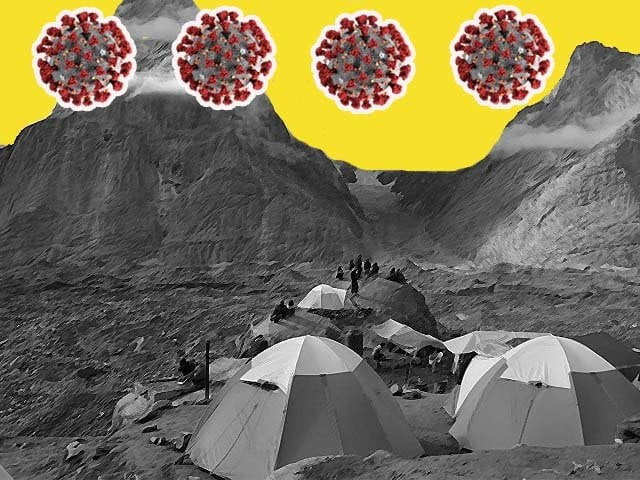Before we begin, let’s address the elephant in the room: the COVID-19 pandemic has sucked the normalcy out of almost everyone’s life. That being said, this pandemic shall pass eventually, and there is little value in spinning endless conspiracies and rhetoric around it. While the country was gearing up for the revival of its tourism sector, the global travel advisories, suspension of major flights, and subsequent transformation of hotels up and down the country into quarantine sectors have essentially robbed us of an otherwise promising season.
Yet this unforeseen delay may be a blessing in disguise for the tourism sector as it allows those involved to benchmark, evaluate, and bolster Pakistan’s institutional tourism capacity. At the turn of this decade, Pakistan saw the return of British Airways, previously red travel advisories turn green, visits from various dignitaries including the British royal couple, and press-authorities on tourism boast of Pakistan’s attractiveness for tourists. The rusting mechanism, once employed by tour operators, was being cleaned and readied for the season. This wasn’t a surprise. After all, Pakistan boasts beautiful mountains, pristine lakes and rivers, historically vibrant cities, and unparalleled tales. For years, the plague of terrorism had walled these wonders from the rest of the world, and the walls were beginning to crumble. Pakistan was ready to open itself up to the rest of the world.
The China Pakistan Economic Corridor (CPEC) further catalysed growth in this sector with the construction of much-needed motorways, and exclusive economic zones. YouTubers from different countries also provided a soft image bump, which proved to be a powerful form of marketing. However, some problems need addressing before tourism can become a serious sector for Pakistan. The country is still not an incredibly easy place to travel in: with no-objection certificates (NOCs) required for movement within certain areas, a gora (white) complex which produces an inconsistent experience amongst diverse groups of tourists, a set of cultural and linguistic barriers, and a lack of standardised resorts and infrastructure in remote areas.
With multiple iterations of handling seasonal inbound tourists, there is bound to be an evolution of tourist-friendly policies and social impediments. However, the number of hotels is small, their rates unpredictable, and their standards inconsistent. At times, domestic tourists find themselves stranded on segments of roads blocked by massive landslides. In some areas, the definition of a highway is a stretch of rocky terrain, slightly smoothed by the number of large trucks and buses passing over it. Available flights to the northern areas are often difficult to find during peak season with no alternatives. Perhaps it may be a good idea to follow in Nepal’s footsteps and incentivise private flight operators who can give aerial tours of the northern areas.
To the casual observer, the COVID-19 pandemic is a devastating blow to the thousands of people who earn their livelihood through an increasingly promising tourism sector. The observer would not be wrong, but it would be foolish not to consider that the nature of policies this pandemic has brought could be potentially game-changing for ensuring the sustainability of our tourism sector in the long run.
Imran Khan’s recent push for the up-gradation of the construction sector, with various incentives offered to those who initiate construction projects, could not have come a better time. Construction of world-class resorts and hotels along with reliable roads will not only help retain a large number of economically weak workers but will also boost the tourism sector for years to come. The government of Pakistan can even go further by building extensions to and renovating existing resorts while establishing new sites for ecotourism.
Construction alone will never be the answer; thorough planning and measurement of the number and types of touristic sites need to be married with an active policy that ensures that Pakistan opens its doors to the rest of the world, unequivocally and universally. In the past few years, there have been various private sector initiatives, often student-driven, that have done a lot of good work by establishing themed tours that enhance urban tourism. Perhaps the time has come to appreciate the fact the history of Lahore and Peshawar is second to none, and a majority of global tourists choose urban destinations like Paris, London, and Rome.
Local small and medium-sized enterprises (SMEs) need to be empowered, complementary industries, like souvenirs, need to be spawned, hotels and resorts need to be constructed, and a compelling narrative needs to be unilaterally produced that projects the splendours of this country to the rest of the world. It is perhaps too soon to comment on how the next few months will unravel, but it is a matter of fact rather than speculation that the tourism industry in this country needs work to achieve its true potential. Pakistan is joining the race late, and it would be unwise to remain idle when given a chance to catch up to the rest of the world during this strange break.
How will COVID-19 impact tourism in Pakistan?
The delay could allow the tourism sector to benchmark, evaluate, and bolster Pakistan's institutional tourism...



COMMENTS
Comments are moderated and generally will be posted if they are on-topic and not abusive.
For more information, please see our Comments FAQ